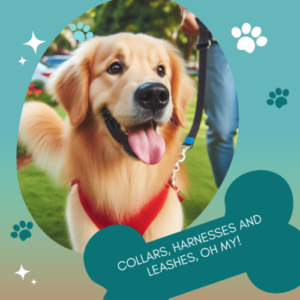There isn’t a specific collar or leash designed for dogs with diabetes that would be inherently better than others. Diabetes in dogs primarily affects their blood sugar levels and doesn’t typically require special considerations for collars or leashes. The most important aspects of managing canine diabetes are proper diet, exercise, and insulin management as prescribed by a veterinarian.
However, there are some general factors to consider when choosing a collar or leash for any dog, including those with diabetes:
- Comfort: A soft, padded collar can be more comfortable, especially if the dog needs to wear it for extended periods. We don’t leave Brady’s harness on him all the time. We only put it on for walks.
- Visibility: If your dog needs frequent walks for exercise (which can help manage diabetes), a reflective collar or leash might be useful for nighttime visibility. Brady gets his last walk between 11 and midnight most nights. The reflective strip on his harness helps us keep track of him when we let him off leash.
- Medical alert: Attach a medical alert tag to the collar indicating that your dog has diabetes. This could be crucial if your dog ever gets lost or in an emergency.
- Fit: Ensure the collar fits properly, as weight fluctuations can occur in diabetic dogs.
Choosing the right gear may seem overwhelming, but it’s all about understanding your dog’s needs and habits. In this article, I will explore the options with you so you can find the perfect fit for your dog. Picking out the right collar, leash, or harness isn’t just about style—it’s about keeping your dog safe and comfortable.
Dog collars come in various types
Flat: These are the most common type of dog collar. Flat collars are adjustable bands made from fabric, leather, or nylon. The flat collar is your go-to for everyday use. It’s simple, adjustable, and usually comes with a handy ID tag holder. Measure your dog’s neck for collars. A snug collar should leave enough room to fit two fingers under it.
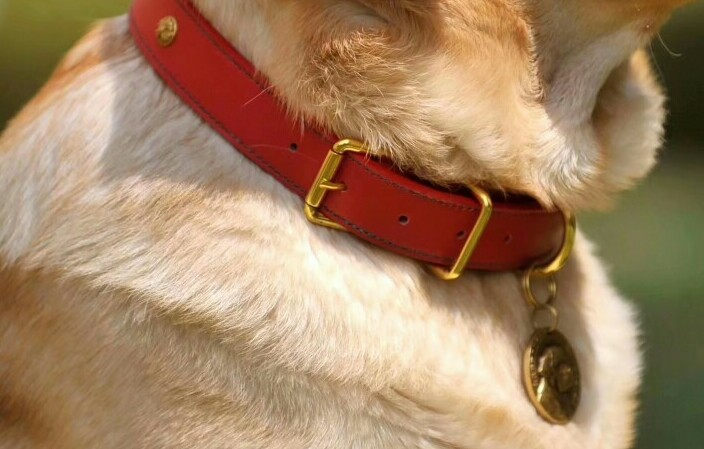
Martingale collars: These collars have a loop that tightens when your dog tries to pull away, preventing them from slipping out without applying excessive pressure. Martingale collars are ideal for dogs with narrow heads like greyhounds or whippets. They are also good for dogs that love to pull by giving you more control without causing your dog pain. They tighten just enough when pulled but remain comfortable when relaxed.
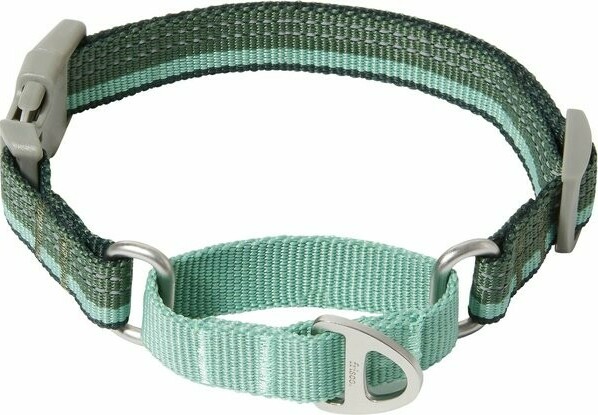
Head collars: These collars help control leash pulling by guiding your dog’s head in the direction you want them to go. However, head collars must be used correctly. If your dog hits the end of the leash or is jerked while wearing a head collar, it could injure her neck. The fit is also important. Head collars that fit too tightly can damage your dog’s eyes or rub the fur off her snout.
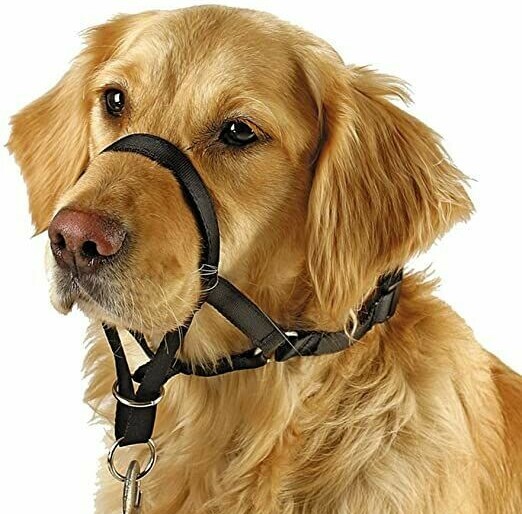
Harnesses are the safest, most secure, and most comfortable way to hook your dog up to his leash. A good harness will reduce pulling, increase your control over your dog, and decrease stress on her neck and joints. Harnesses can help discourage dogs from pulling on their leash, and a front clip can help heavy pullers turn back toward you. They can help prevent back pain and injuries to the throat or trachea, which are common with collars. This is especially important for dogs with breathing issues, like pugs, or long-bodied breeds like dachshunds. We use a harness for Brady that we put on to walk him. When we get ready to take him out, he sits and lifts his front legs to let us put the harness on. It’s pretty cute. He is not a puller, but we feel better knowing that if he decides to take off, he is secure and won’t hurt his neck or back.
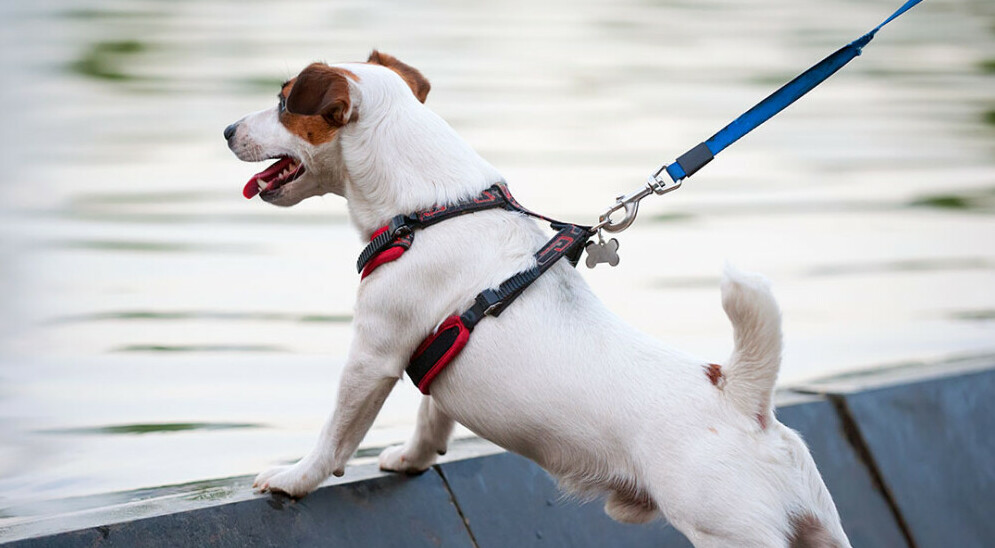
Leashes
When it comes to leashes, make sure they have a reliable hook, a comfortable handle, and double-stitched ends for good measure. Leashes also come in categories: standard, retractable, and hands-free. If you have a well-mannered, obedient dog that doesn’t pull, jump up, or try to run off and always comes when called, you might find that a retractable leash is suitable for your pet. However, a standard leash is the best choice, especially if your dog is a puller or hasn’t learned to walk calmly beside you.
Standard Leash
Standard 4ft (130cm) – 6ft (180cm) leashes are perfect for controlled walks. They are usually made from nylon or leather. A standard leash is short enough to allow you to pull your dog away from unpredictable situations, including strange dogs, and wildlife, and you can also prevent your dog from eating something unpleasant or potentially toxic. We use a standard leash. Brady has a Napolean complex and is braver than he should be with dogs many times his size, so we like having control anytime other dogs are around. We are also grateful for the added control when Brady is hunting for “snacks” like fishbones thrown out by the neighbors. In an urban area, a shorter leash keeps your dog right by your side with no danger of him straying off the curb and into the road. Any dog leash will wear out over time. Another advantage of a standard leash is that any wear and tear is easy to spot before the leash breaks. With a retractable leash, damage to the leash cord is usually hidden inside the handle when the leash is wound up.
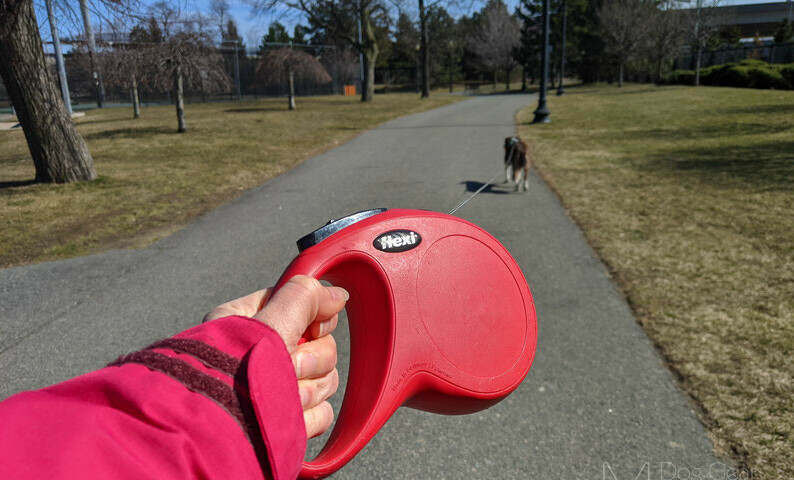
Retractable leash
Retractable leashes allow your dog more freedom to explore and are ideal in parks or public spaces where off-leash play is not permitted. A retractable leash allows your dog to roam up to 26 feet away. You can use a retractable leash in a shorter, locked length, the same way you use a regular leash.
That said, they are not for all dogs. With this type of leash, the dog pulls on the leash, and the spooling mechanism extends the leash cord. The dog quickly learns that he can gain more freedom and get to where he wants to be by pulling on his leash. This encourages pulling behavior. You definitely don’t want that if your dog tends to pull already or you’re trying to leash-train a puppy.
The main problem with using retractable leashes is the danger they pose both to dogs and their handlers. Both can sustain injuries from the thin cord on a retractable leash. If a thin leash cord gets tangled around your finger, your arm, or your dog, either of you could sustain friction burns, lacerations, or even amputation. Retractable leash cords have burned both Todd and me. We threw the one we had for Brady away.
A leash cord around your legs could easily cause you to fall, potentially sustaining serious injuries or broken bones. I’ve had someone close to me seriously injured by her dog running to the end of her retractable leash and yanking her owner off her feet. Your dog could injure another dog or a small child if he charged into them. An overexcited dog could easily dash out into a busy street, cause an accident, or collide with a cyclist or pedestrian. Also, retractable leash handles can easily be tugged from your grasp if your dog takes off. Retractable leashes must be used with caution and only if you have a calm, well-behaved, or elderly dog.

Hands-Free Leash
A third option is a hands-free leash. Hands-free leashes are awesome for jogging or when you need to keep your hands free because you are pushing a stroller or carrying something. They can be used like a standard leash, around your waist like a belt or crossbody, over your head and one shoulder. Similar to the retractable leash, the hands-free option is best for well-behaved dogs who already know how to walk politely on a standard leash. You don’t have as much control as a regular leash, so they’re not a good fit for people who are outweighed or are not as strong as the dogs they walk. Even if your dog usually doesn’t pull, a squirrel sighting or something similar could cause your dog to make a sudden, harsh movement and cause a fall.
Expert tips for finding the right gear
Vibrant colors or fun prints can highlight your dog’s personality and make them stand out. It’s a chance to show off some flair rather than sticking to boring basics. Mix and match until you find something that suits both you and your dog.
Leashes and collars get dirty, especially if your dog’s an outdoor adventurer. Choose materials that are easy to clean and maintain, so you’re not scrubbing mud out every other day.
The material you pick plays a big role in durability and cleanliness. Nylon collars are practically indestructible and easy to wash, making them a good option for most pet owners. Steer clear of leather and metal for every day—they can be rough on your dog’s skin.
Value is more than just price. Investing in quality gear pays off in durability and performance. Cheap gear may save a few bucks initially but could cost more in the long run if it needs frequent replacing or hurts you or your dog.
Once you’re ready, take your dog with you to the pet store. Try the gear on the spot to save you from misjudging the size and needing to return it. Check for the snugness of the collar or harness, the ease of putting it on, and how your dog reacts to it. Watch for signs of discomfort or irritation. Remember, the best gear is one that both you and your dog feel comfortable with. Happy walking!
What collar and leash did you choose for your dog? Why? I’d love to hear from you. Leave any comments or questions below.

